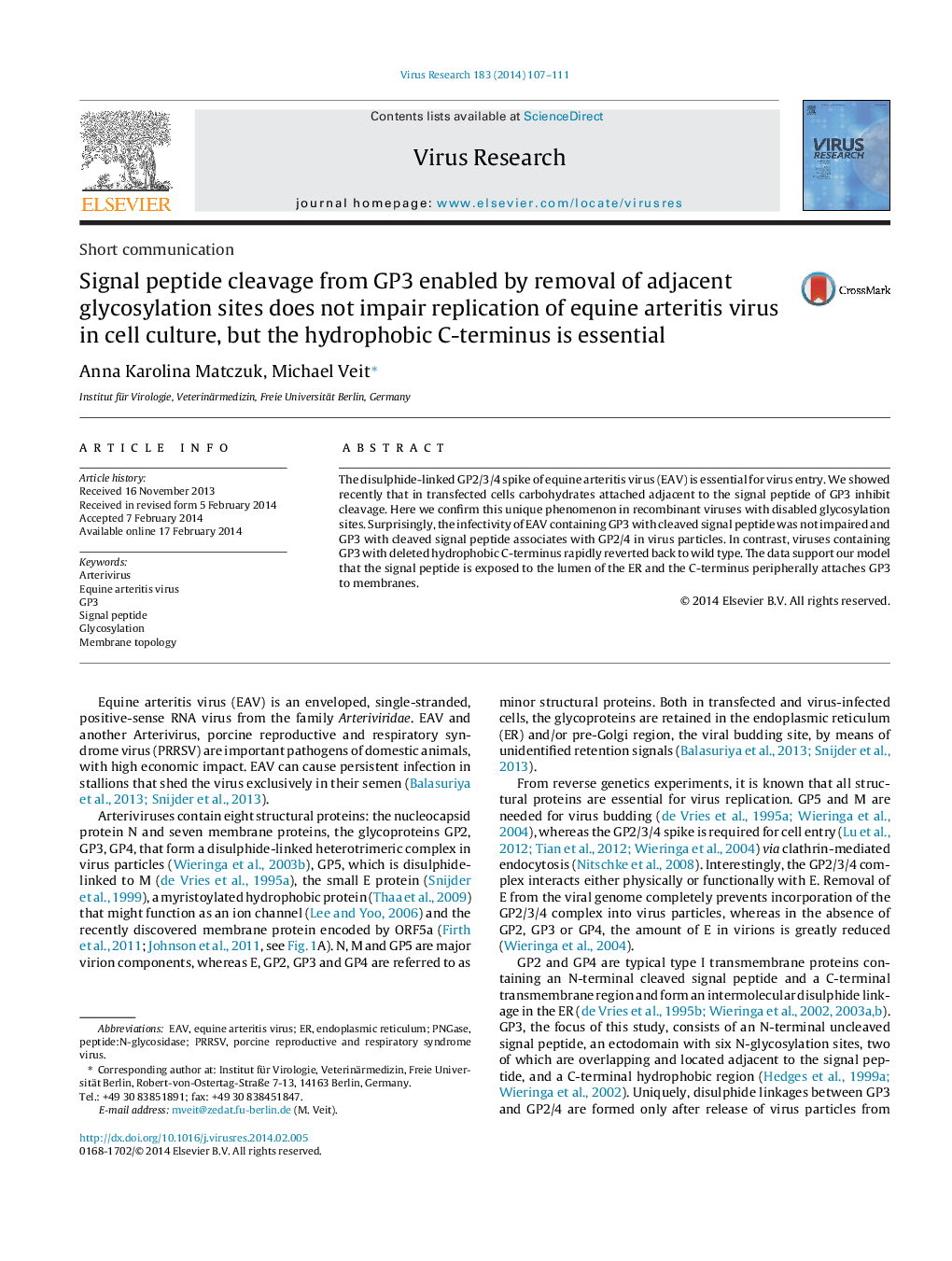| Article ID | Journal | Published Year | Pages | File Type |
|---|---|---|---|---|
| 3428494 | Virus Research | 2014 | 5 Pages |
•Glycosylation near the signal peptide of Gp3 from EAV prevents cleavage.•Recombinant viruses with cleaved signal peptide have no growth defect.•EAV with a deletion of the hydrophobic C-terminus reverted back to wild-type.•Results support our model: signal peptide is exposed to the lumen of the ER.•The C-terminus attaches Gp3 to membranes.
The disulphide-linked GP2/3/4 spike of equine arteritis virus (EAV) is essential for virus entry. We showed recently that in transfected cells carbohydrates attached adjacent to the signal peptide of GP3 inhibit cleavage. Here we confirm this unique phenomenon in recombinant viruses with disabled glycosylation sites. Surprisingly, the infectivity of EAV containing GP3 with cleaved signal peptide was not impaired and GP3 with cleaved signal peptide associates with GP2/4 in virus particles. In contrast, viruses containing GP3 with deleted hydrophobic C-terminus rapidly reverted back to wild type. The data support our model that the signal peptide is exposed to the lumen of the ER and the C-terminus peripherally attaches GP3 to membranes.
